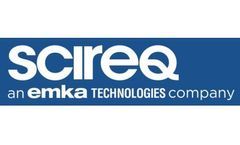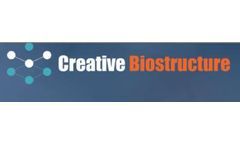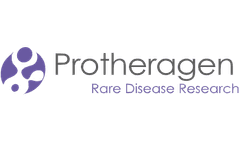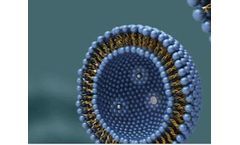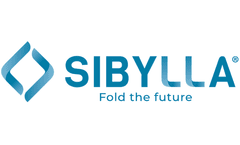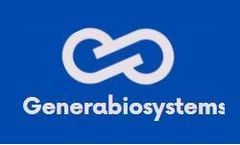Lung Cell Articles & Analysis
29 articles found
At that time, based on identification of recurrent genomic alterations in the eight most deadly cancers and their ranking on the ESMO Scale for Clinical Actionability of molecular Targets (ESCAT), NGS was recommended for advanced non-squamous non-small-cell lung cancer (NSCLC), prostate cancer, ovarian cancer and cholangiocarcinoma. ...
Pulmonary fibrosis, particularly idiopathic pulmonary fibrosis (IPF), represents a significant challenge in healthcare due to its detrimental impact on lung function and limited treatment options. While WNT/β-catenin signaling plays a crucial role in lung development and maintenance of adult lung stem cells, its ...
Extracellular vesicles (EVs): Small vesicles called EVs are expelled by cells. They contain a range of biomolecules, such as lipids, proteins, and nucleic acids. ...
Different from the approved indications of Trodelvy, Dato-DXd plans to use advanced non-small cell lung cancer (NSCLC) as the first indication. In addition to single-target Trop-2 ADCs, some companies are also deploying dual-target ADCs. ...
The use of IgG-type SignalTACs to treat HER2+ cell lines (SKBR3, BT474, and SKOV3) showed that SignalTACs Ab1-Ab6 induced degradation in all three cell lines. ...
Cystic fibrosis (CF) is a rare genetic disorder that affects the lungs, digestive system, and other organs. It is caused by mutations in the cystic fibrosis transmembrane conductance regulator (CFTR) gene, which encodes a protein that regulates chloride ions transport across cell membranes. ...
Therefore, quantum dot-labeled microspheres can be used for multiplex detection of miRNA overexpression in human lung cancer cells. Fluorescent Microspheres for Protein Detection Multi-color quantum dot-bound microspheres have been widely proven to be used for the simultaneous detection of multiple antigens, including IgG, tumor markers, and pathogenic markers. ...
All the news collected help reader of report to understand the gaps in the marketplace and competitor’s strength and weakness thereby, providing insights to enhance product and service.Global Paclitaxel Injection Industry Segmentation:By ApplicationProstate Cancer Breast Cancer Non-Small Cell Lung Cancer AIDS related Kaposi's Sarcoma Ovarian Cancer Stomach Cancer ...
By comparing the toxicity of chitosan oligosaccharides with different molecular weights and different degrees of deacetylation to prostate cancer cells PC3, lung cancer cells A549 and liver cancer cells HepG2, the researchers found that chitosan with low molecular weight and low degree of deacetylation has Better anti-tumor ...
ALK-positive non-small cell lung cancer (ALK+ NSCLC) is a relatively rare and dangerous subtype, with patients suffering from a high incidence rate of brain metastases. ...
Sibylla Biotech has discovered one structural drug discovery target, showing two potential drug binding pockets in the intermediate folding structures of ACE2, a protein normally found on the surface of lung cells (and of other organs such as heart and gut), exploited by the SARS-CoV-2 virus as its entry gate to the cell. ...
Abstract Background: Five-year survival for stage I-II lung cancer is quite low even after complete surgical resection. Current guidelines recommend adjuvant treatment only for selected patients with stage II or higher disease. ...
We compared the differential gene expression in non-small cell lung cancer (NSCLC) between two platforms in order to find the most relevant genomic signatures of tumor recurrence. Materials and Methods We analyzed gene expression in frozen lung cancer tissue from 59 selected patients who had undergone surgical resection of NSCLC. ...
(“Aesther”) (NASDAQ: AEHA) announced today the discovery of bispecific antibodies that target Chitinase 3-like-1 and immune checkpoint inhibitors, killing glioblastoma cells and melanoma cells, and blocking the metastasis of malignant melanoma cells to the lung by over 90%. ...
A study conducted under the Lung Cancer Master Protocol (Lung-MAP) found that when treated with a combination of ramuzumab (Cyramza) and Keytruda, Patients with advanced NSCLC whose cancer progressed during prior immunotherapy lived significantly longer than when treated with one of the current standard therapies for this cancer. ...
Further studies of other solid tumor types, including pancreatic, ovarian, and lung cell lines, showed the same results: the resistance to CAR-T cell therapy stems from the loss of interferon pathway genes. "We found that CAR-T cells did not bind to glioblastoma cells that lack interferon signaling," Larson ...
Lymphocyte-activation gene 3 (LAG-3), also known as CD233, is a type I transmembrane protein expressed mainly in activated T cells, NK cells, B cells, and plasma cell-like DCs. Oncology and autoimmune diseases (rheumatoid arthritis, multiple sclerosis) are currently among the clinical pipeline indications for LAG-3 which acts as ...
Glycosylation regulates a range of physiopathological processes, including cell-cell adhesion, cell-matrix interactions, epithelial-mesenchymal transition, tumor proliferation, invasion, metastasis, and angiogenesis. ...
For cancer, it is given by slow injection into a vein via intravenous and used for cancers of colon, lung, glioblastoma, and renal-cell carcinoma. This drug is used as a first-line therapy in many of these diseases. ...
Over time, genetic research have recognized a number of genetic danger variants related to neurodegenerative problems and helped reveal new organic pathways and genes of curiosity. Nevertheless, genetic danger variants generally reside in non-coding areas and should regulate distant genes reasonably than the closest gene, in addition to a gene’s interplay companions in organic networks. ...


